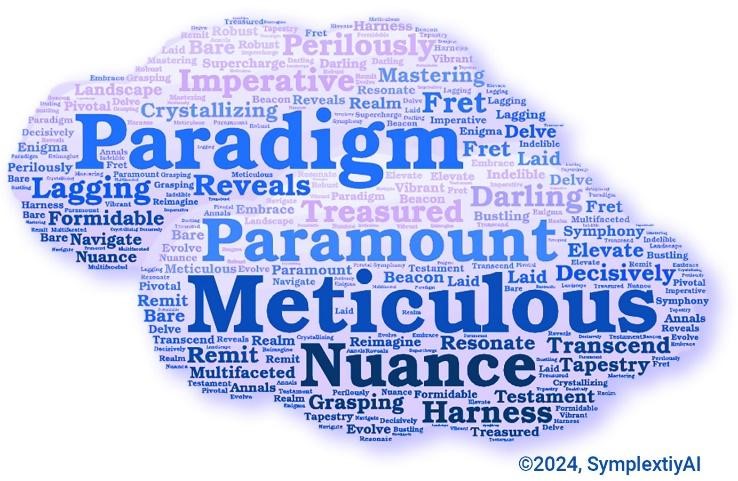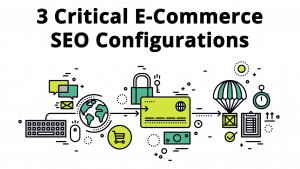Key B2B considerations for successful AI adoption, from team preparation to selecting context-aware solutions.
As predictable as the sun coming up in the morning, each day I speak with sales and marketing leaders who fear they’re not doing enough with AI and have fallen too far behind.
They feel unsuccessful and worried they aren’t meeting leadership expectations. Take a deep breath. You’re not an anomalous failure, and it doesn’t mean your team sucks.

I just read a post the other day that talked about the “early days” of AI. The writer was referring to last fall and winter. While it sounds odd, it’s becoming clearer how these tools are meant to work with you and your team.
Enough of the ‘current state’
About 87% of businesses are in the early stages of AI adoption or have not yet started, according to McKinsey. Gartner indicates that only 24% of marketers report having AI and machine learning as a top priority in their tools and tech stack, highlighting a significant gap in prioritizing AI as a portion of their budgets.
Is AI a silver bullet? Do you have highly proficient AI experts on your team? Can you afford one of the international consulting organizations to drive an eight-figure project for you? Probably not.
Do you need all those things today? Probably not. However, it’s potentially transformational for those who invest in a forward path.
What does a successful ‘future state’ look like?
The plan: ‘By failing to prepare, you are preparing to fail.’
Benjamin Franklin had this right nearly 300 years ago.
Do you have a cross-functional team to evaluate use cases and create a policy? AI is not unlike every other part of an organization; you need to prepare and have a plan. Without this plan, you’ll end up with Bring Your Own AI (BYOAI) and chaos. AI is happening already.
We recommend that clients create a panel of interested parties with various interests. While you need to have voices from your technical, HR and legal teams, you must surround these protectionist voices with parties interested in creating value, such as sales, marketing, customer success, sales enablement, product and more.
The interests of data privacy, responsible use and careful selection of use cases are important and should be advocated. However, these concerns should not be the only focus, as they might not fully understand your goals and could end up hindering progress. They need your insights and education.
The need: Identify practical use cases for your team
Narrow down your aperture of consideration and avoid confusion and consternation. You’re not trying to carve this decision into granite, but take a moment to find applications your team will find valuable. In this decision process, consider selecting an area where you have low perceived risk and high perceived value.
Many marketers choose content creation and personalization versioning for this exact reason. It’s hard to do well, and the result is that one would hope this information becomes public: IT, privacy and legal teams would (should) have no concern over this use case and others where the cultivation of information is innocuous.
The goal: Effectiveness
When you select use cases, consider how AI can help make your team more effective. Generative AI is amazing at assimilating hundreds of dimensions of analysis simultaneously. The average super-smart person can analyze two to three dimensions. This is its key strength: effectiveness. AI inherently creates efficiency, so the desired future state is to create productivity (effectiveness + efficiency).
How will you identify the productivity gained for each use case? What measures will focus on effectiveness? Separately, what will measure efficiency? When “experts” focus on efficiency, they’ve got it wrong. Unless you solve the effectiveness part of the equation, efficiency simply doesn’t matter.
Think of it this way: how many times have you read an AI-word-salad email you intuitively know was created faster than a person could have typed, but it utterly lacked any sense of relevance? Hundreds? Yeah, me too. Efficient? Yes. Effective? No. And, doing more of this is negative and corrosive, not positive and of value.
The challenge: Context
For all that large language models know, they’re nearly unusable for sales and marketing use cases. While it can tell you about Quantum Physics or farming best practices in the Sub-Saharan regions of Africa, they completely lack the context of your organization, how your solution approach is better, how your capabilities are superior or why your audience needs may differ from competitors.
The most expensive path is to rely on prompt engineering, upload a few pages of content or create numerous microscopic custom GPTs. This approach is the current state, and we see confusion, low adoption and lack of impact.
Without this context, your interactions are generic, and generic is where the AI word salad begins.
Focus your solution selection on the ability to train the AI tool on your company strategy and perspective. Use prompt engineering to achieve this.
The path: Native, embedded or purpose-built AI tools
In a non-trivial sense, even doing nothing with AI doesn’t mean you’re not using AI. Your phone and video call transcription services all use AI.
But should you guide the adoption or let it occur randomly? BYOAI is a thing, just as BYOD (Bring Your Own Device) was a thing a decade or two ago. I generally coach organizations to see three classes of AI tools:
Native. While most people will instantly consider chat-based tools like ChatGPT, there are also their enterprise parents, like OpenAI. Many of the “experts” get this wrong. You can create an OpenAI account and access the completely unthrottled environment of OpenAI.
Data privacy and hallucination are largely a byproduct of consumer-oriented chat-based tools, not enterprise counterparts. Trying to make the consumer chatbot act in a business environment is problematic. It’s an enormous time-suck (expensive) and only drives a nominal amount of value because it lacks the context of your business that can drive value.
Direct access to enterprise tools can be more expensive and require new skills, but it is THE way to experience AI.
Embedded. Think about the tools you use every day in marketing and sales — your CRM system, marketing automation platform or sales enablement tools. Embedded AI solutions nestle right in these familiar environments. They bring functionalities like predictive analytics and personalized content recommendations directly to your fingertips.
But let’s be candid. While these solutions streamline repetitive tasks and provide valuable insights, they often lack the unique context of your organization’s specific needs and goals. This shortfall restricts their ability to drive genuine effectiveness.
The pivotal question is: Do these embedded AI solutions enhance the effectiveness of your AI use cases? For instance, do they make your marketing campaigns more targeted and impactful or merely expedite the process without adding substantial value?
Before you use these tools headfirst, evaluate how well they align with your strategic objectives. Are they meeting the nuanced requirements of your marketing and sales efforts or falling short? This self-assessment is crucial in determining whether these embedded options truly drive transformative results.
Purpose-built. These are the bespoke solutions typically focused on a narrow use case. Because they’re tailored to particular use cases, they’re more likely to provide relevant context and actionable insights. But here’s the concern: how well can they adapt to your unique environment?
The key here is to ensure the context you provide is sufficient to drive meaningful effectiveness. Can you train the tools to thoroughly understand your capabilities and solutions, audience, differentiation and market approach?
The post Unlocking AI’s potential in B2B marketing appeared first on MarTech.
(3)
Report Post






